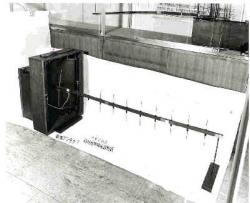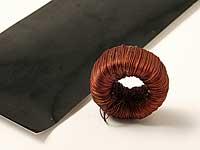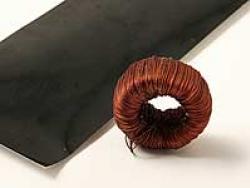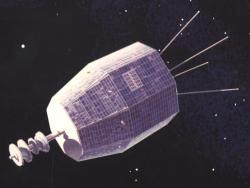On 23 November 1963, this site received the first transpacific transmission of a TV signal from Mojave earth station in California, U.S.A., via the Relay 1 communications satellite. The Ibaraki earth station used a 20m Cassegrain antenna, the first use of this type of antenna for commercial telecommunications. This event demonstrated the capability and impact of satellite communications and helped open a new era of intercontinental live TV programming relayed via satellite.
Antennae

YearAdded:
Image Credit:
Image Caption:
Artist's vision of NASA Relay 1 satellite
Era_date_from:
1963
2009

Beginning in 1924, Professor Hidetsugu Yagi and his assistant, Shintaro Uda, designed and constructed a sensitive and highly-directional antenna using closely-coupled parasitic elements. The antenna, which is effective in the higher-frequency ranges, has been important for radar, television, and amateur radio.
The antenna system, using a driven element with closely coupled parasitics (usually a reflector and one or more directors) for short-wave work, was first described by S. Uda, a professor at Tohuku University in Japan, in 1926, in the IEEJ (Japan). A colleague, Professor H.
YearAdded:
Image Credit:
Courtesy IEEE
Image Caption:
The Yagi-Uda directive short wave antenna
Era_date_from:
1924
1995

Dr. Takeshi Takei, the professor at the Tokyo Institute of Technology, discovered that composite oxides containing zinc and iron have distinguished magnetic properties. In 1930, Prof. Takei submitted a paper on his work to Japanese Electro-chemical Society and also presented a paper at 57th General Meeting of American Electrochemical Society in St. Louis. That same year, Prof. Takei applied a patent for his discovery, which was granted in 1932(Japan PAT-98844).
Tokyo Denki Kagaku Kogyo (now TDK Corporation) was founded in 1935 to commercialize this newly invented ferrite cores.
YearAdded:
Image Credit:
Courtesy Tokyo Institute of Technology
Image Caption:
A replica of the early soft-ferrite core.
Era_date_from:
1930
2009
Innovations

Dr. Takeshi Takei, the professor at the Tokyo Institute of Technology, discovered that composite oxides containing zinc and iron have distinguished magnetic properties. In 1930, Prof. Takei submitted a paper on his work to Japanese Electro-chemical Society and also presented a paper at 57th General… Read More

Beginning in 1924, Professor Hidetsugu Yagi and his assistant, Shintaro Uda, designed and constructed a sensitive and highly-directional antenna using closely-coupled parasitic elements. The antenna, which is effective in the higher-frequency ranges, has been important for radar, television, and… Read More

On 23 November 1963, this site received the first transpacific transmission of a TV signal from Mojave earth station in California, U.S.A., via the Relay 1 communications satellite. The Ibaraki earth station used a 20m Cassegrain antenna, the first use of this type of antenna for commercial…
Read More

